CONTRIBUTION BY ELIZABETH KANE
1. Great Gulf Trail
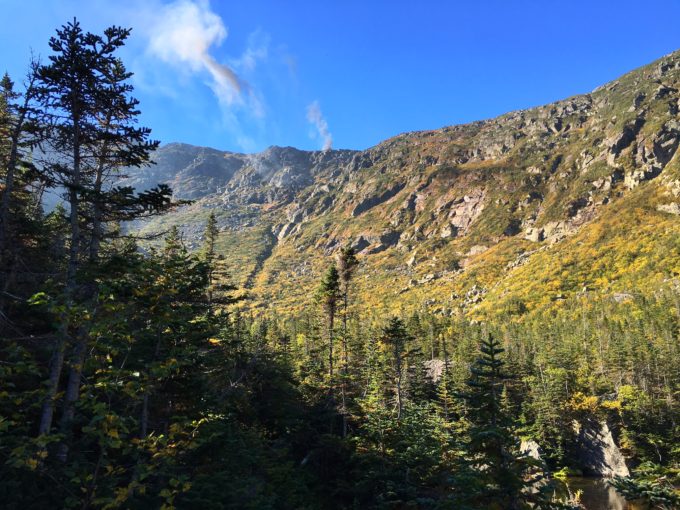
The view as you approach Spaulding Lake
History: The Wilderness Act of 1964 officially protected the Great Gulf as the first designated Wilderness area in the White Mountains. It now encompasses 5,658 acres of definitively perceptible wild land, home to tumbling waterfalls, rugged trails, and rapture-inducing forest spans.
One of the grandest characters in the Great Gulf’s history was intrepid trailblazer Warren W. Hart. Hart first entered the still relatively untrammeled Great Gulf in 1908 and envisioned a trail network there of a difficulty caliber still uncontested in the remainder of the White Mountains. Over the next three years as AMC’s councilor of improvements, he cut not only the Great Gulf Trail, but nine others including the infamous Six Husbands Trail and the now abandoned Adams Slide Trail.
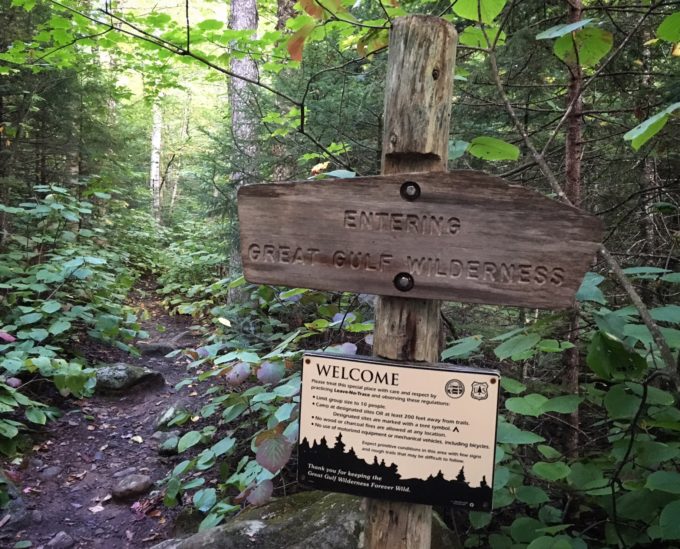
Morning sun lights up the singletrack
Beta: Approximately 7.4 miles long, 4,650 feet of elevation gain from the parking lot just off of NH 16 to the Gulfside Trail Junction. Climb and additional half mile or so to summit Washington.
There is notably varied footing among this trail, including narrow, mossy singletrack, slick slab scrambles, a pleasant section of old logging road, and talus hopping. The prevalence of water along this trail can mean mud, so be prepared with proper footwear.
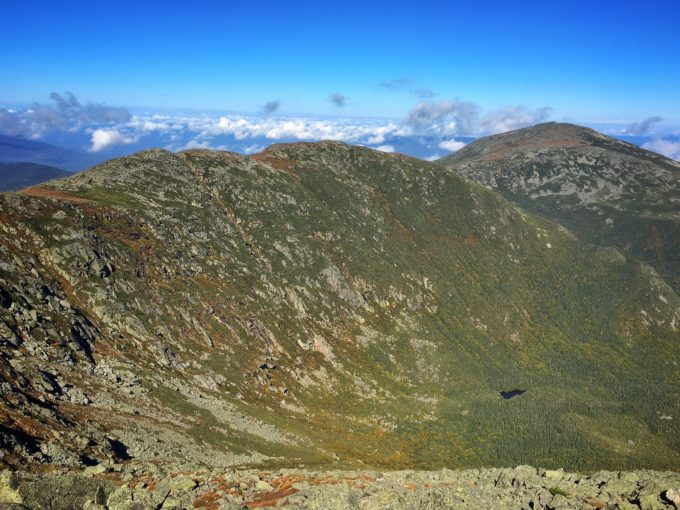
The Northern Presidentials with tiny Spaulding Lake from above
Climbing the headwall out of the Great Gulf is a truly visceral experience. As you pass Spaulding Lake, the views open and the Northern Presidentials rise high and rim the breathtaking landscape.
Navigating the talus can be challenging; look for blazes and cairns and be aware. This trail is generally recommended for ascent rather than descent.
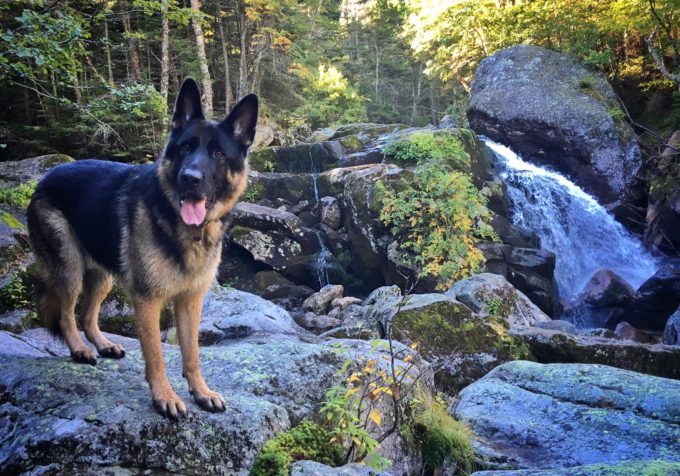
Cascades abound right along the path
Why:The Great Gulf is the most expansive glacial cirque in the White Mountains. It sits on the eastern side of the Northern Presidential Range, which boasts the highest peaks in New England. The great crescent arm of these summits extends northeastward and envelops the massive bowl, which is drained by the West Branch of the Peabody River. The trail follows this drainage to the headwall, passing several pleasant waterfalls and the diminutive but stunning Spaulding Lake.
There are several designated campsites along the trail. Other options nearby include Osgood Tentsite and AMC’s Madison Spring Hut (not open year round, reservations required.) Please know Wilderness backcountry camping regulations prior to hitting the trail.
2. Dry River Trail
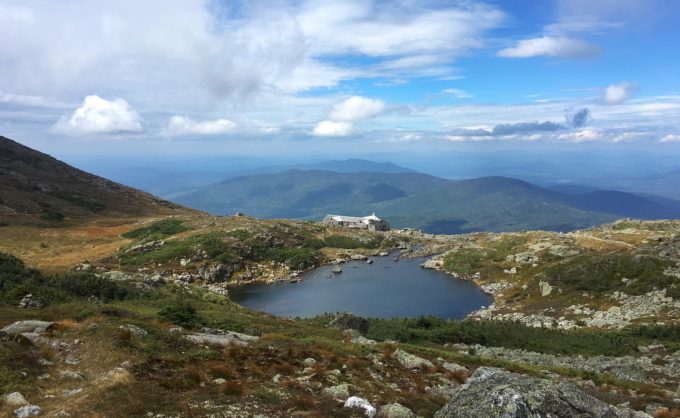
Lakes of The Clouds Hut marks one end of the Dry River Trail.
History: This area was logged in the 1890s, and sections of the first five miles of trail follow vestiges of an old logging railroad bed. Originally there were three shelters along the route, but only Dry River Shelter #3 remains. The trail was closed in August of 2011 after being absolutely ravaged by Tropical Storm Irene. The storm both widened the river’s path and washed out significant sections of trail. It was reopened late in 2014 under a new designation as a primitive wilderness trail. A sign near the trailhead warns of ‘navigational challenges’.

A picturesque suspension bridge, rebuilt in 2009, makes this crossing the easiest of the route.
Beta: Approximately 9.6 miles long, 4,250 feet of elevation gain from US 302 to Lakes of the Clouds Hut.
Erosion and water crossings pose the most salient of the myriad of perceived challenges in this excursion. Be prepared to get wet, muddy and exert far more energy than you would a typical valley hike. In order to eliminate many of the original water crossings, the trail was rerouted and climbs and descends small bluffs and sidewalls. This adds both more elevation change and technical footing than you would expect. When simply looking at this trail from a topographic map, you may fail to recognize that the terrain lines do not tell the entire story. Be prepared for a long day out, and to be highly alert in staying on trail.
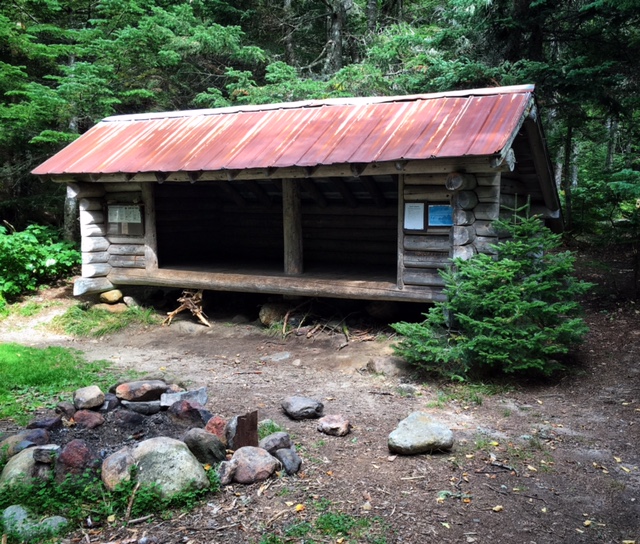
Dry River Shelter #3
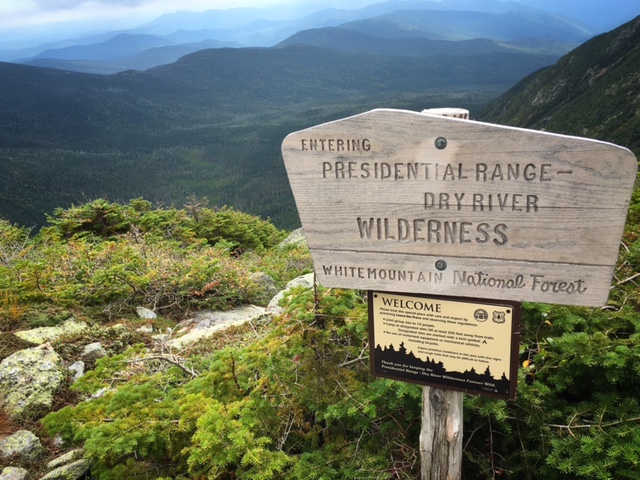
Trail Sign Oakes Gulf section of trail
Why: As long and drawn out as the route along the valley may be, ascending Oakes Gulf from deep within the sheltered wilderness is an experience unparalleled in the Southern Presidentials. The path into and through the gulf is littered with blowdowns, but the views start early as you ascend, and only become more incredible as you climb upward and out. In Spring, both the swollen waterways and mud season trail conditions would make this trek far less enjoyable. In Fall, the foliage is remarkable and walking along the valley floor on a sunny day is reminiscent of being within a kaleidoscope.

Otherworldly Forest
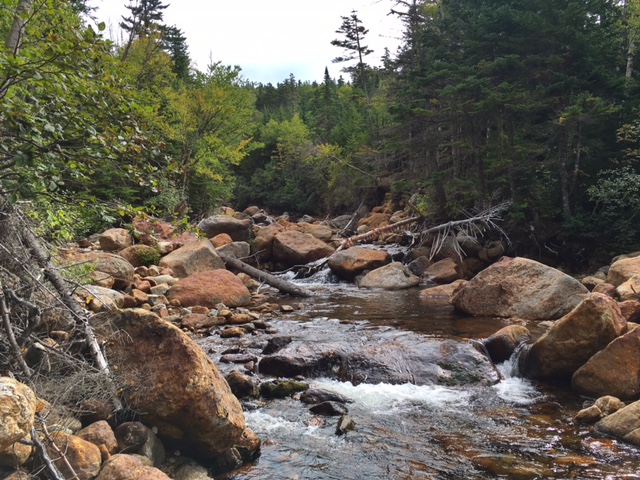
Dry River
The valley is slung between the Montalban Range and the Southern Presidential ridge, which offer several peaks with wide-spanning views. From a backcountry camping standpoint, this area is paradisiacal. A few designated tent site areas (see WMNF backcountry regulations) and Dry River Shelter #3 are all befitting of those who prefer a remote setting with abundant water and access to two incredible ridges. For those seeking a more comfortable evening exploring this area, the AMC’s Lakes of the Clouds Hut is situated at one terminus of the trail, with more amenities available. See the AMC website for operating dates and reservations.
3. Castle Ravine Trail
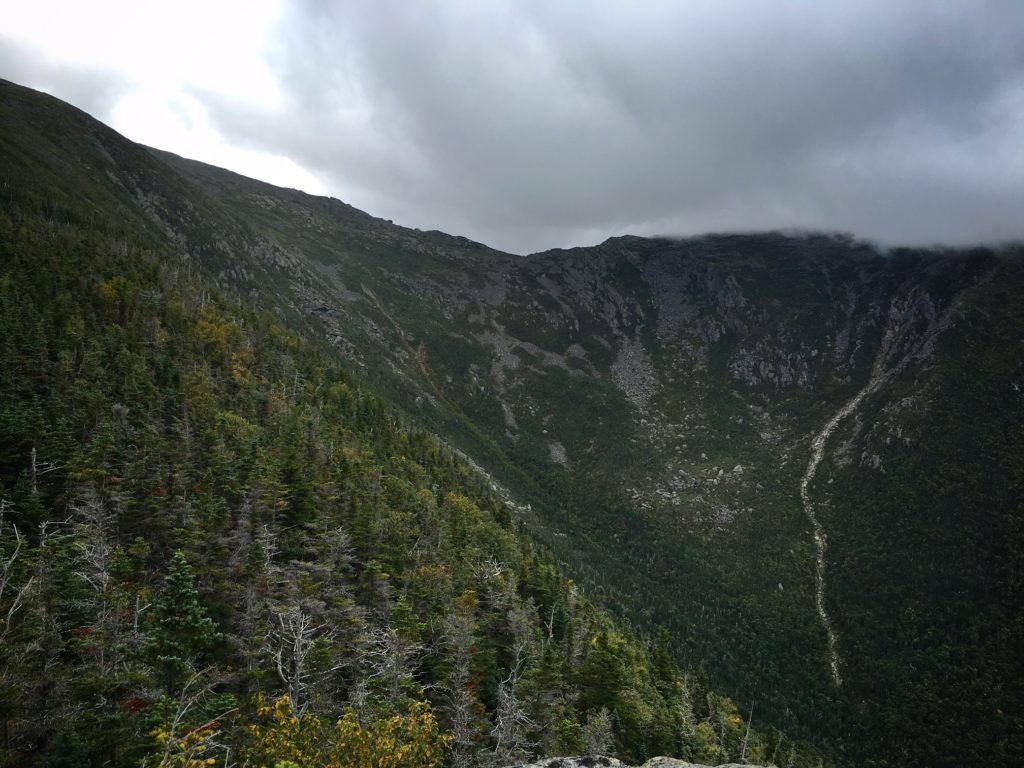
The Castle Ravine in its glory
History: The Castle Ravine trail was first cut by the Randolph Mountain Club between 1916 and 1922 and still remains under their stewardship. As with many WMNF trails, the long reach of the logging industry spelled disaster for the virgin forests of this ravine. The area was heavily logged in the late 1800s/early 1900s and the mark of destruction is still evident on the lower reaches of this trail.
A 1991 slide shifted the route of the trail on the headwall. The path can be difficult to follow, so take care to follow paint blazes and cairns.
A 2010 avalanche dumped a massive amount of debris across the trail on an unmistakable section below the headwall of difficult footing over mats of branches and logs.
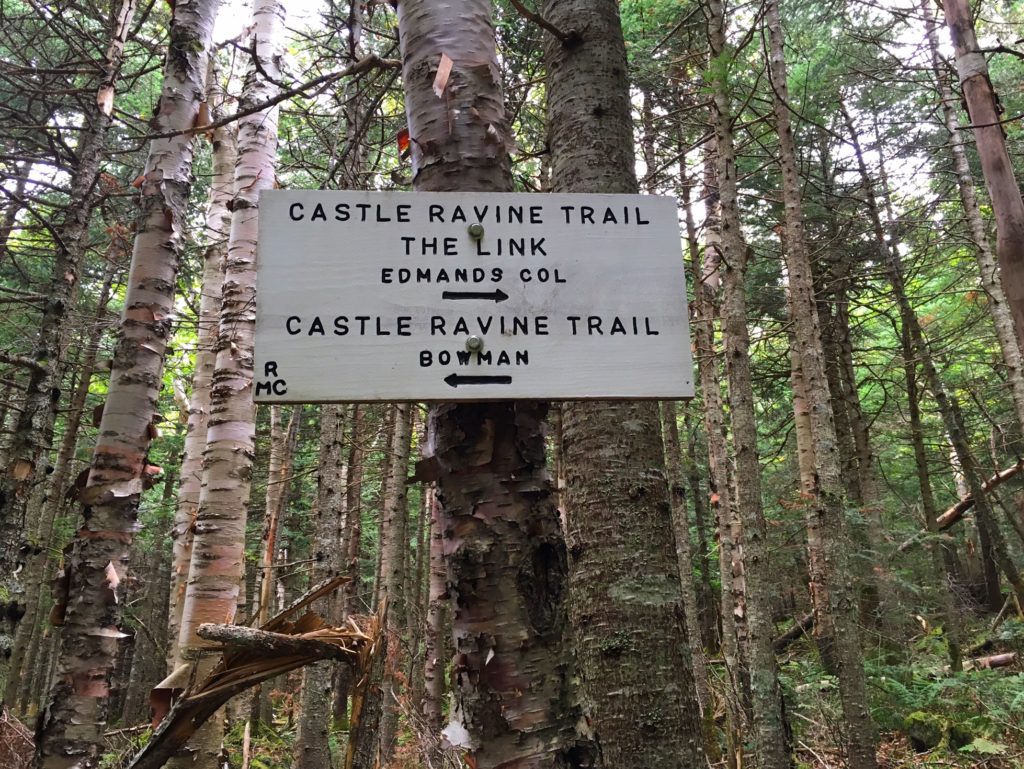
RMC signs provide direction in this remote area
Beta: Approximately 2.8 miles long, 2800 feet of elevation gain from Israel Ridge Path junction to Cornice junction.
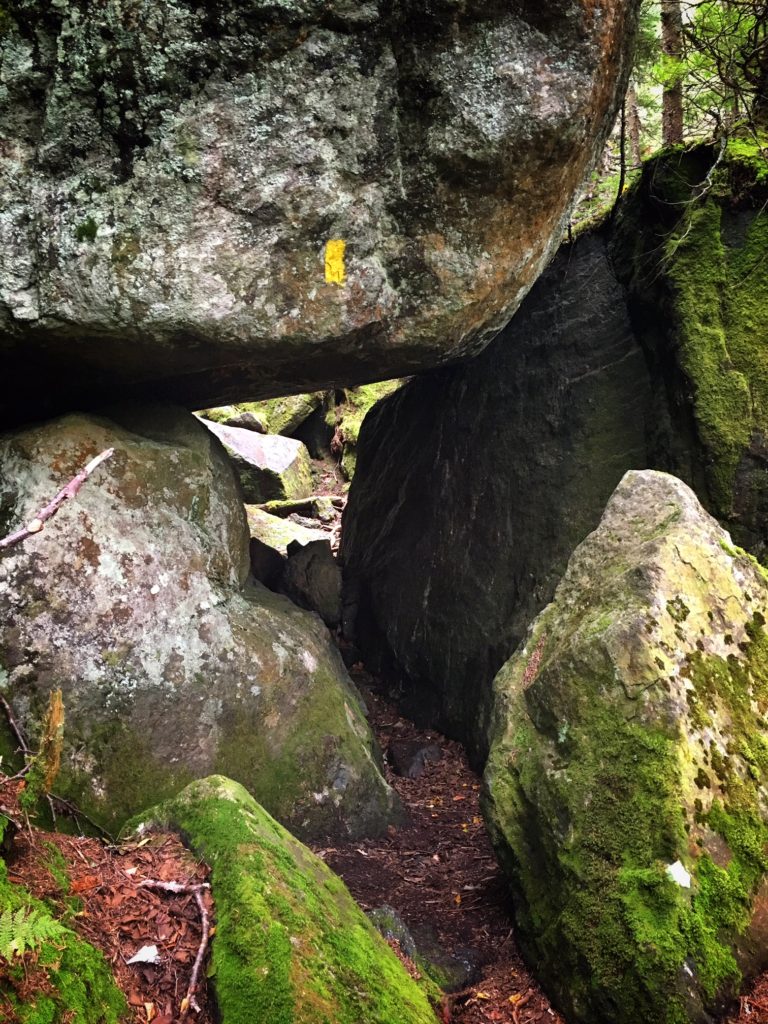
Boulder scrambles and tunnels as you near the upper reaches of the ravine
The Castle Ravine trail provides a tour of the stunning and wild Castle Ravine, a glacial gulf sandwiched by Israel Ridge on the East and Castellated Ridge on the West. Both Mounts Jefferson and Adams are easily accessible from the terminus of this trail near Edmands Col, and the nearby RMC camps provide enticing options for shelter should one prefer to explore this area in a multi-day trip.
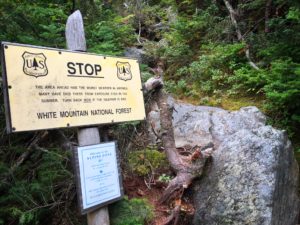
The head wall of the ravine is very exposed-know your weather forecast and always be prepared to turn back

Spectacular views abound as you begin to climb the head wall
Why: Castle Ravine is perhaps one of the least traveled cirques in the Presidentials. The impression of its remote and rugged persona is riveting to most any trekker and its envelopment by two gorgeous and rocky ridges creates a feeling of total immersion. The sound of rushing water is a near constant companion on this trail until you emerge at the base of the headwall and a series of miniature cascades adds charm. The headwall views are spectacular in every direction- Castellated Ridge, Mount Bowman, Israel Ridge, and the outlet of the ravine are all equally enchanting. This entire experience is a veritable feast for the senses.
Be prepared for several river crossings and hand over foot climbing over large boulders and talus on this challenging trail. Most often it is recommended for ascent rather than descent.
4. Kate Sleeper Trail

The view from South slide is worth the effort
History: The trail is named for Katherine Sleeper Walden, a dynamic and magnanimous figure in White Mountain history. The breadth of her influence in both social and conservation efforts is extensive, including innkeeper of the Wonalancet Farm and being instrumental in the formation of the Wonalancet Outdoor Club (WODC). Mount Katherine, East & West Sleeper and this trail are all named in her honor.
Official stewardship of the trail returned to its original benefactor, the WODC, in 1993, decided at their annual meeting. At the time, the Forest Service was overburdened with trail work and relinquished it without much ado. Maintenance of the trail, which is labor-intense considering the propensity for blow downs on the ridge, has been under their auspices since.

East Sleeper’s summit
Beta: Approximately 3.3 miles long, 950 feet of elevation gain from Rollins Trail Junction to Mount Tripyramid Trail.
The trail provides a handy link up for a tour of the eastern peaks of the Sandwich Range. It connects the two prominent peaks surrounding ‘The Bowl’, Passaconaway and Whiteface to the Tripyramids. The path itself traverses Sleeper Ridge, which includes the two peaks of East and West Sleeper (two short spur trails lead to official summits). East Sleeper is on the New England Hundred Highest Peaks List.

Shifting rock, loose footing and steep pitches on South slide

Yes, this was ‘on trail’.
Blow downs, overgrowth and root climbs add to the charm.
Why: There is no small effort required just to access the Kate Sleeper Trail itself. Each of several approaches is long, but well worth the toil.
Shaping an experience unique to a hiker’s preferences is a key quality of this trail. The juxtaposition of the intensity of sharp South slide of Tripyramid at one end with verdant, mossy grace of the opposite end serves both the thrill seeker and placid trekker alike.
For the scrambler, the South slide end of Kate Sleeper provides a rare view over the Lost Pass, Flat Mountain and Sandwich Dome region. Abundant water at the opposite end of the trail surrounding swampy areas and the Downes Brook drainage create a sublime emerald wonderland of sorts in the warmer seasons. The expanse between feels otherworldly; countless blowdowns, overgrowth, and a distinct feeling of solitude is elevated here. I’ve come upon more moose here than on any other trail in the WMNF.
5. Black Angel Trail
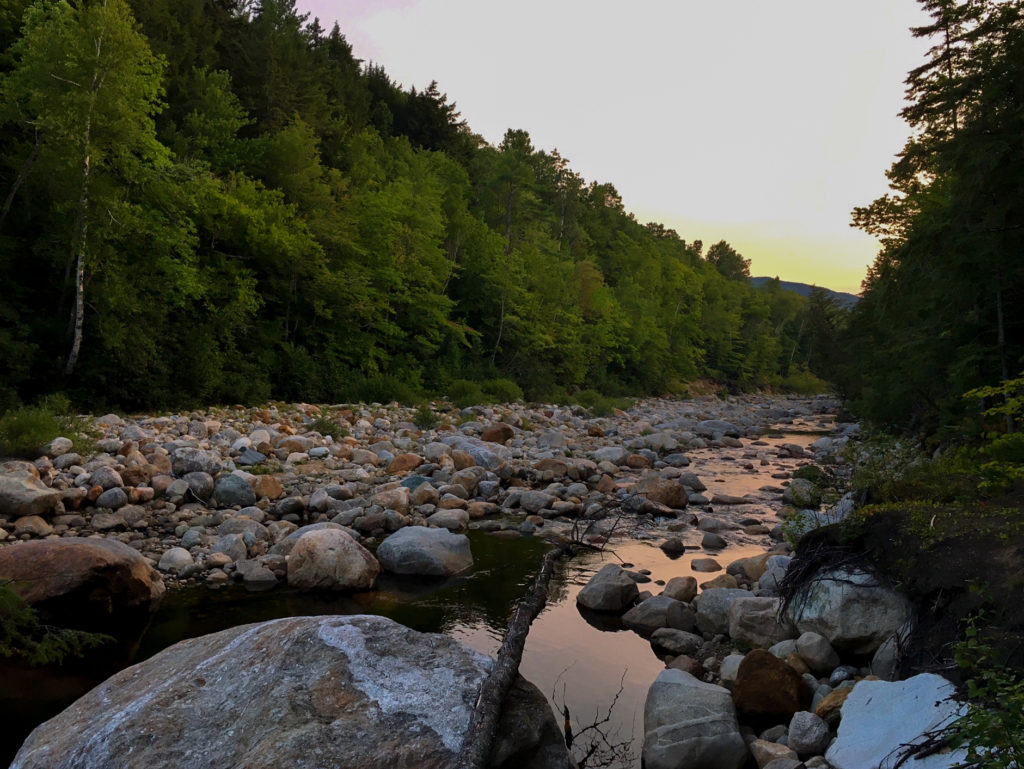
The Wild River
History: In 2006, the Wild River Wilderness became the newest designation of wilderness area in the WMNF. The valley was stripped of its timber by heavy logging in the 1890s. Many of the paths in this area follow old logging roads and dismantled railroad beds. The forest burned to the ground in 1903, ending timber operations. Even among the regrowth, artifacts and vestiges of its pillaged past are still visible to the hiker with acute observation skills.
Beta: Approximately 7.7 miles long, 3,650 feet of elevation gain from Rim Junction to Carter-Moriah Trail. To complete the entire length of trail, one must cross the Wild River itself. Be prepared to rock hop, or to turn around in high water conditions. Spider Bridge used to span the river near the current junction, but was washed away in 2005 and will not be replaced.
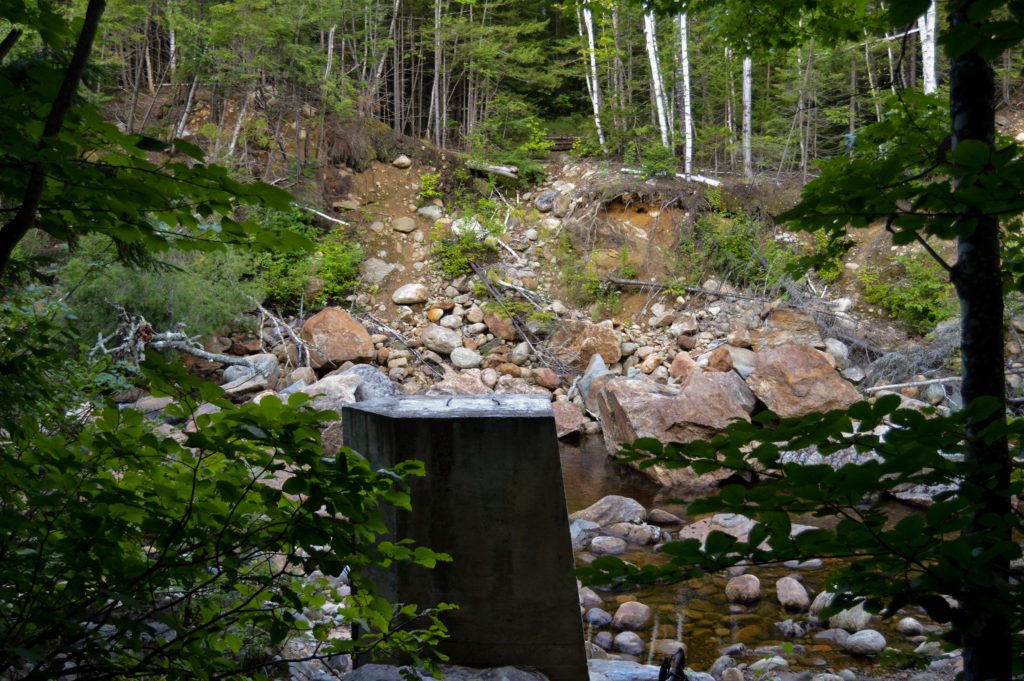
Remnants of Spider Bridge, near the crossing of the Black Angel Trail over the Wild River
Why You Need to Hike This Trail: The Black Angel Trail bisects the remote Wild River Valley, connecting the Carter-Moriah Range to the West with the Baldface-Royce Range in Evans Notch to the East. Partial views into the Wild River Wilderness from higher points on the trail near the Carter-Moriah Range are spectacular.
Much of the trail offers smoother underfoot conditions than many other trails in the WMNF, making it an enticing option for inclusion on a trail running loop, or for those hikers that enjoy less aggressive terrain.

The varied forests of the Black Angel Trail is one of its most appealing features
Camping in the general Black Angel Trail area is of high caliber. The Wild River Campground offers a jump off point for exploring both ranges, with abundant fishing and swimming holes. Blue Brook tent site (see WMNF website for restrictions and regulations) is a viable backcountry experience for a first timer or family, as its proximity to trailheads is close.
About The Author
Elizabeth Kane
Elizabeth’s love for the White Mountains is unparalleled. Despite working 40-50 hours/week, she manages to spend every spare minute in the Whites and her knowledge of the trail system is impressive. Her pup, Katahdin has likely logged more hours on the trails and tagged more summits than most do in their lifetime. On any given day, you can find Elizabeth hiking, trail running, fly fishing, climbing, mountain biking, or backpacking. She considers the White Mountains her home and we think that is pretty darn great! We are honored to have Elizabeth and Katahdin as NEM Ambassadors!
WATCH NOW!
Keeping Up With Elizabeth Kane
BRAND AMBASSADORS
Calling all talented writers, photographers and creatives with a passion for the outdoors to join our Brand Ambassador Team.
CONTACT US TO GET STARTED


 We are proud to work with the Department of Agriculture, the White Mountain National Forest and the Androscoggin Ranger District where we are authorized outfitter guides.
We are proud to work with the Department of Agriculture, the White Mountain National Forest and the Androscoggin Ranger District where we are authorized outfitter guides.
